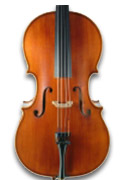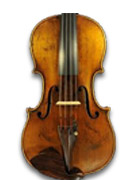
Buying a violin bow.
Whether you're a student starting out on the violin, or a professional musician, choosing the right violin bow in a violin shop can be difficult.
There are a variety of violin bows available in the marketplace, from wood bows to those made of synthetic materials such as fiberglass. If you buy a violin, a bow will usually be included with the purchase. However, many musicians find that they need a better quality bow, or one that will give them a different sound when playing. When choosing a quality bow, price is not necessarily the only factor, as a more expensive bow is not always a better bow. Look for the following qualities in a bow to determine the right one for you.
-
1. Shop for the bow in an online violin shop
By only a certified bow.
If you are planning to spend much money on a bow, always by a bow with a CERTIFICATE from a leading expert like Raffin, Gruenke, B. Millant, C. Beare, P. Guillaume, etc.,....
Don't trust the fake bows you can buy on Ebay, Amazon etc.,...
I have seen many new made Chinese copies with fake stamps, only use a reliable violin shop.
2. Consider the material of the violin bow.
Wood bows are typically made of pernambuco or brazilwood. Pernambuco is a heavier wood used for high-quality bows, and is more expensive. Brazilwood is a popular choice for beginners because it is inexpensive and durable. Fiberglass and carbon fiber bows are the most durable, and vary in price.
3. Examine the qualities of the bow.•
Look for strength in the bow.
The bow is strong when it doesn't bend too much to the left or right when played.
The hair of the bow should not collapse when using the bow.
-
Look for a straight bow. The violin bow should be completely straight from end to end when examined on a flat surface.
Test for response time. The violin bow should not bounce or wobble on the violin strings, and it should feel easy to play with a strong bow. • Feel the weight of the bow. A good bow should not be too heavy or too light in your hand.
-
Test the bow for sound quality. Ask the retailer to allow you to try a variety of bows on your violin in order to compare sound. Look for bows that play evenly, and improve the sound of the instrument. Test the sound of the bow when it's played at the tip and at the frog (the heel at the other end of the bow). Sound quality can be affected by the stiffness of the stick. A stick that is too soft will lack a quality of definition and clarity, while a stiffer stick will give you a brighter sound. Too stiff a stick can produce an edgy sound, however. The key is to listen for an even and broad sound that is smooth and responds quickly to your strokes. Buy a bow that comes with a warranty. A reputable dealer should be able to provide a quality bow that can withstand normal playing conditions.
-
Look for a retailer who will allow you to use the bow on-site, and will also offer you a warranty on the bow you choose.
from : https://www.wikihow.comVisit our violin shop for old violins. French violins, Italian violins and violas.
or visit our section of professional French violin bows, or French cello bows
Visit our cello shop
















